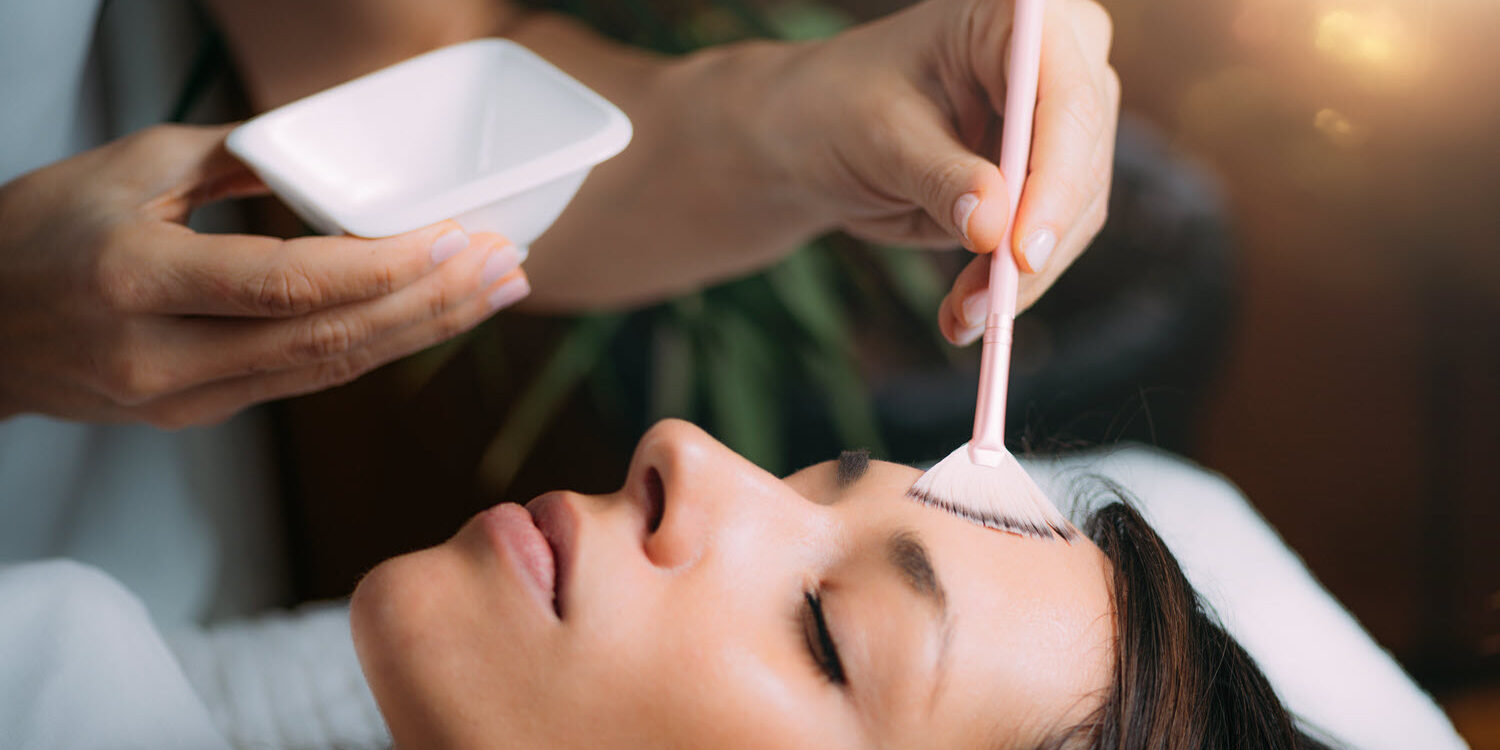A Beginner’s Guide to Chemical Peels
A Beginner’s Guide to Chemical Peels
If you have ever wondered how you can get rid of sun damage or improve fine lines on your skin, a chemical peel is made to do just that! A chemical peel is a resurfacing technique that is used to improve the overall quality of the skin. There are all different kinds of chemical peels, ranging in intensity from light to medium to deep. But before you book your initial consultation to get a chemical peel at Vina Laser Med Spa, here is what you need to know about chemical peels, how they work, and if they are right for your skin type.
What are Chemical Peels & How Do They Work?
According to The American Society of Plastic Surgeons, a chemical peel for the face is a procedure in which a chemical solution is applied to the skin to remove damaged skin cells, treat wrinkles and correct scars and sunspot discolorations. The peels contain different types of acids that have varying depths of skin penetration. These options depend on your needs and how sensitive your skin is.
A chemical peel works by removing the dead and damaged upper skin layers, exfoliating the skin to create a new layer. This rejuvenated layer will be smoother with a refined texture with less visible scars, wrinkles, blemishes, and discoloration. Chemical peel treatments also have the ability to encourage collagen production in deeper levels of the dermis, promoting skin renewal.
Types of Chemical Peels
Not all chemical peels are the same, so you can expect a different experience depending on the strength of the acid and the depth of the peel. Here are the three major types:
- Light Chemical Peels
Light chemical peels are typically used to treat mild acne or uneven skin tone, or just to brighten up your skin. The light peels typically contain Glycolic or Salicylic acid.
Salicylic acid helps minimize the appearance of pores and acne bumps by going into your pores and follicles and treat the acne at its core. Glycolic acid is used as a peeling agent that stays on top of the skin. It is a light peel, so you can expect mild dryness and exfoliation.
Recovery time for this peel can vary from hours to a few days with little to no down time. Light chemical peels can be done every two to five weeks since they aren’t as intense on the skin.
- Medium Chemical Peels

Medium peels can be used to correct the physical appearance of more extensive sun damage, deeper lines, and more significant wrinkles, giving you a smooth, fresh look. These medium peels penetrate deeper than the light chemical peels, penetrating all five layers of the epidermis.
Recovery time for this peel may take a week or two with the skin appearing red and swollen. Patients might also experience blistering, with skin crusting and peeling off by the end of the second week.
- Deep Chemical Peels
Deep chemical peels are the most aggressive type of chemical peel. These require more downtime and are usually only recommended on those with extensive sun damage, wrinkles, and fine lines. Deep peels are able to reverse deep-set signs of aging since they penetrate all the way to the reticular layer of the dermis. Pretreatment is needed for up to weight weeks (we will provide you with specific instructions beforehand) and is a one-time only treatment that is applied to your face and has significant downtime.
To prepare for your chemical peel, some general instructions include:
- Avoid tanning and direct sun exposure for two weeks before each treatment.
- Apply topical products (such as hydroquinone) as instructed before treatment to prepare your skin.
- Don’t use any products containing retinoids (such as tretinoin) one to two weeks before treatment unless your physician tells you differently.
- If you have been prescribed oral antibiotics or an oral antiviral medicine, start taking it at least 24 hours before your chemical peel.
- Peel areas must be free of any open sores, lesions, or skin infections.
How to Prepare for a Chemical Peel
Prior to your chemical peel appointment, you will need to schedule an initial consultation with one of our trained aestheticians to discuss your goals and expected outcomes from the chemical peel. We will then create a personalized treatment plan that will best fit your unique needs.
At the initial consultation, we will ask you questions about your past medical history, past surgeries, drug allergies, and any current medications you are taking. This will help us to determine the best treatment plan. We will also evaluate your face and skin quality so we can recommend the best peel for your skin. During this time, please feel free to share any questions or concerns you have about your skin and the procedure!
Chemical Peel Results and Post-Treatment Care
What to expect varies depending on the depth of your chemical peel. Typically, you will need about two weeks for your skin to recover from a chemical peel. Within the first couple of days, your skin may have some mild peeling. Use gentle skin products to keep your skin moisturized and hydrated to help with the healing process. Avoid any exfoliation and retinols.
You also want to avoid sun exposure for at least one week and wear a good SPF when you do go outside. Your skin will be thinner during recovery, so UV rays will be more damaging to the skin.
Drinking plenty of water will keep your skin hydrated and will help in your recovery. To achieve your goals, most patients will need multiple treatments.
Potential Skin Benefits of a Chemical Peel
Chemical peels are used to treat certain skin conditions or to improve your appearance by improving the tone and texture of your skin They can help reduce or improve:
- Fine lines under your eyes or around your mouth and wrinkling caused by sun damage, aging and hereditary factors.
- Certain types of acne.
- Mild scarring.
- Sunspots, age spots, liver spots, freckles, uneven skin coloring.
- Precancerous scaly spots called actinic keratosis.
- Rough skin, scaly patches, dull complexion.
- Dark patches (melasma) due to pregnancy or taking birth control pills.
Potential Complications of a Chemical Peel
In certain skin types, there’s a risk of a temporary or permanent change in the color of your skin. Taking birth control pills, pregnancy, or a family history of brownish discoloration on your face may increase your risk of developing abnormal pigmentation.
There’s also a low risk of scarring in certain areas of your face and certain individuals may be more prone to scarring. If scarring does occur, it can usually be treated with good results.
If you’ve had a history of herpes outbreaks, there’s a small chance of reactivating the cold sore. Your dermatologist can prescribe medication to reduce the chance of a flare up. Follow the instructions of your doctor.
Before your chemical peel, be sure to tell your aesthetician if you have a history of keloids (scar tissue overgrowth created at the site of a skin injury), any unusual scarring tendencies, any X-rays of your face or history of cold sores.
Infections are rare but still a risk.
Whether you have always wanted to try a chemical peel or you had only recently heard about it, it’s important to know your different options so you and your aesthetician can find the right treatment for you. Contact Vina Laser Med Spa at (989) 791-2020 today to schedule an initial chemical peel consultation! We can answer any questions you may have.



